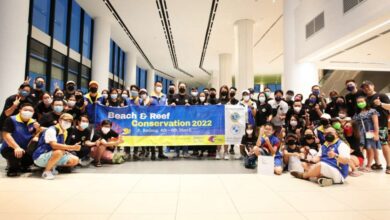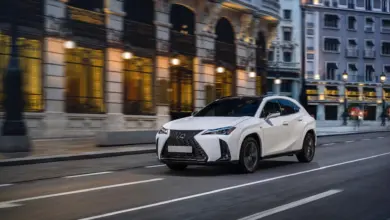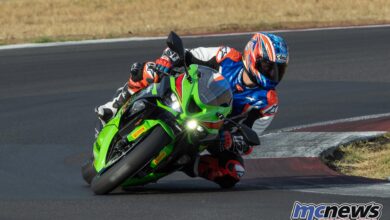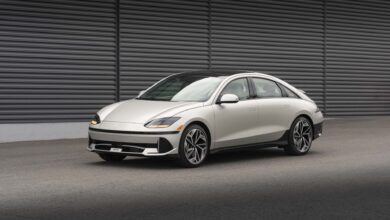An Elon Musk-Controlled Charging Network Imperils The EV Revolution

It’s becoming increasingly clear that the EV transition is a lot more fragile than automakers and policymakers are letting on. True, demand for electrified cars and trucks is generally up, but automakers, both legacy and new are struggling with selling electric vehicles profitably and overcoming the very real concerns EV intenders have about the public charging infrastructure. It’s no longer all that hard to find an EV that’s capable of driving well over 200 miles on a single charge, but it seems that the recharging experience is starting to crystallize as the make-or-break part of EV ownership. One brand has acted as a sort of measuring stick for the consumer EV experience — Tesla.
The Tesla charging experience is very good, and legacy automakers and EV startups alike are desperate to impart that goodness to their own products. If it will help them sell EVs in the short term, they’ll make a deal with a devil to remove a big barrier to entry into EV ownership. If someone who would otherwise be interested in one of your company’s EVs is being dissuaded by reports of nightmare charging experiences, you’d be motivated to get them access to the good chargers. It seems like that access to the Supercharger network is dependent on a deal that involves switching to Tesla’s once proprietary plug, now called NACS.
Now that Tesla CEO Elon Musk is the very visible head of Twitter, the things that auto industry experts have been saying about him for years are becoming clear to the public and the media who haven’t been covering Tesla. It’s hard not to wonder, then, if we are leaving the EV revolution in the hands of a CEO that could be called vindictive, volatile, and possibly worst of all – unreliable.
Until 2020, I didn’t use Twitter. I was solely an Instagram and Facebook guy, posting my thoughts to a curated audience of people I at least somewhat knew. Then, when I found myself working as a journalist, reporting on the initial impact of COVID, and later the globe-gripping George Floyd protests, I hopped on. Bar none — Twitter was the place to get on-the-minute updates on incredibly volatile situations by people who were actually on the scene. It was a great place to query opinions, and get all sorts of background information; the things that form the building blocks of strong journalism. It wasn’t perfect or complete, but it was a hell of a jumping-off point.
But that’s kind of all gone now. Twitter somehow survived a barrage of changes, and a severe reduction of staff at the behest of owner Elon Musk. But, the ad-hoc town hall created over the site’s decade-long tenure, where journalists, regular people, entertainers, and even governments and emergency services gathered in a single meeting spot, was gutted. The site’s culture has changed for the worse, as pay-to-play style $8-per month users are boosted to the top of everyone’s replies and newsfeed, regardless of whether they’re insightful or entertaining. Then on July 1, the site really started to grind to a halt.
With no announcement or run-up, Elon Musk announced that every single user had been rate limited. Verified users could view 6,000 posts, but the literal millions of unverified users would be limited to a mere 600 posts maximum (later revised to 800). This means the site became absolutely broken for *millions* of Twitter browsers, in every single country where Twitter exists.
Now, as automakers herald the switch to Tesla’s NACS plug, I can’t help but wonder: Is this the best idea? Are Twitter’s woes merely a precursor to what we’ll experience as users of Tesla’s supercharger network? Are automakers prepared to deal with the potential fallout related to leaving the DC fast charging network, and in turn, probably the future of EVs as a whole, in the care of one brand and one man? Is NACS actually as agnostic as Tesla says?
Obviously, Twitter’s rate-limiting stunt went over about as well as a wet fart in a crowded elevator. Left, right, and center have come together to decry and complain about how horrible the site is to use now. But the conversation we should have isn’t about his app-breaking, nor is it really about the shape of the NACS plug, either. It’s about Elon Musk, who moves unilaterally, often breaking things. It’s become clear that there’s no real way to check him or hold him accountable. He’s about to be put more or less in control of American EV infrastructure. To make matters worse, we’ve somehow come to believe that NACS is inherently part of the Supercharging experience.
Let’s get this off the jump here, there’s nothing inherently wrong with NACS, per se. Similar to how “Full-Self-Driving” isn’t actually self-driving, the North American Charging Standard, technically isn’t an actual vetted standard certified by a third party, at least not yet. The SAE says it plans to vet and certify it, but that hasn’t happened yet and likely won’t for a little while.
Still, NACS is essentially the plug that Tesla has used since the original Model S. Because Tesla vehicles never had to accommodate the J1772 AC charging standard, the NACS plug is significantly sleeker than the CCS plug, which simply adds two DC fast charging leads underneath the J1772 plug, making the whole setup kind of ugly and bulky. The NACS plug also has fewer moving parts, and it’s capable of potentially delivering a full megawatt of power through its sleek plug, or so Tesla says.
It’s not all perfect, though. The jury’s out if the Tesla plug standard can handle bi-directional power. Tesla essentially says “coming soon” but there doesn’t appear to be actual technical information on how to make the vehicle-to-grid capabilities advertised by Ford, GM, and Hyundai, actually work via an NACS port.
However, as tantalizing as the technical specs of the NACS plug are, they aren’t all that relevant to the conversation. It’s the thing that the NACS plugs are attached to – the Tesla Supercharging network. After a difficult start to the EV infrastructure roll-out, everybody wants to get their hands on that thing.
Tesla Superchargers are the gold standard in DC fast charging, and for good reason. It’s all a seamless process with Tesla-branded cars, just pull up, plug in, and then unplug and drive away when the process is done. That is often not the case with non-Tesla chargers. The Tesla chargers are generally reliable too. Tesla cites a 99.95% uptime statistic, although that’s kind of misleading. Tesla cites any Supercharger location that has at least 50% of its chargers working, as 100% “up”, which contributes to that great uptime number. Still, compared with the competition, Tesla Superchargers just work, and they return good charging speeds in the process. By comparison, the bevy of CCS-based DC fast-charging services are notoriously unreliable, and charging speeds routinely underdeliver for reasons that are mostly never explained to the end user.
Tesla’s effort in building and maintaining America’s best EV charging network should be applauded. And, they have a massive head start. Another automaker taking it upon themselves to build a Supercharger network clone would be undertaking a long and expensive process.
But the Supercharging network is so damn good not because of the plug, but because Tesla has long understood that a reliable charging network is crucial to its survival. The company makes conveniently located, reliable chargers a priority. Just check out Europe; the EU low-key forced Tesla to switch to the CCS2 plug, and the European supercharger network still has the same excellent reputation.
Yet, unlike the EU where Tesla Superchargers are increasingly open to any EV that can DC fast charge, the North American Tesla Supercharging network has been open only to Tesla.
That is, until recently, when surprisingly online and accessible Ford CEO Jim Farley, took to Twitter right before a big holiday weekend to announce that Ford and Tesla had partnered up. Ford announced it was switching to NACS, and Ford vehicles will be allowed to use the Tesla Supercharging network. Soon, GM, Volvo, Rivian, and Polestar would follow up with similar announcements. For many, it seems like this is a win for EVs; Tesla has more than 12,000 DC fast charging stalls in the United States and Canada. It should be a win.
Yet, the win feels hollow. Instead of the Tesla Supercharging network being opened to all EV models, just like in Europe, it seems like access to the Supercharging deal is predicated on switching to NACS. Every single EV manufacturer that has announced access to the Tesla Supercharging network, has also announced it is switching to NACS. Polestar’s NACS announcement appears to acknowledge this; it straight-up says in its PR release title that it switched to NACS to gain access to the Supercharging network.
The switch to NACS wouldn’t be such a big deal if Tesla and all of the other OEMs didn’t prove when they made the deals that there was no technical reason why they couldn’t have been using the Supercharger network all along. The deal is backward compatible for currently existing EVs with those brands, using an all-new, never-before-seen Supercharger to CCS adapter. That means that a 2017 Chevy Bolt could use the Supercharging network with no modifications, aside from an adapter.
Why? Well in part, it’s because Tesla vehicles actually adopted the CCS communication protocol back in 2019 or so. That’s why many modern Tesla cars can DC fast charge at CCS stations via an adapter. Clearly, the charging stations and cars all have the ability to talk to each other, nothing’s holding anything back, aside from the plug shape, which can quickly be rectified with an adapter. Why are we playing these stupid games? This is clearly not about the plug, is it?
Instead of democratizing the technology and letting any paying customer use it, we got weirdo backdoor deals that aren’t really expanding the charging infrastructure but only making a closed, private EV charging infrastructure a little more inclusive for the brands that opt-in. And worse still, opting in means forming a contract with a brand that is run by someone who doesn’t honor contracts, and seems to have contempt for anyone who asks questions he doesn’t like.
There are no checks and balances with Elon, he’s not predictable, or reliable – just check out what the hell happened to Twitter on July 1. The site broke, the official explanation as to why it broke doesn’t make sense, and Musk is antagonistic to anyone who offers criticism or asks for help. Some say that Twitter’s change to block non-members from viewing the site caused it DDOS attack itself, overwhelming its servers with traffic. Others say that Twitter didn’t pay its Google Services bill, and it frantically moved to get things moved out before it was locked out for nonpayment of services. Whatever the case, Twitter said the rate limits were to combat bots, and that “Any advance notice on these actions would have allowed bad actors to alter their behavior to evade detection.” The explanation feels curt and insubstantial.
He’s changed the amount that users are rate limited by at least twice. Even before Twitter went through the great rate limiting, he blocked non-users from viewing the site entirely. Between those two things, up-to-the-minute updates on breaking news from quality sources are straight-up inaccessible to a lot of people. These were bad decisions, made unilaterally, without care as to how they’ll affect the user base.
My biggest fear is that any of the CEOs that have made deals with Tesla will cross Musk in some way that he deems unacceptable. Perhaps they’ll have concerns with charging speed or quality of service, (Lucid and Hyundai/Kia EVs have reportedly had speed issues using V3 Superchargers), or maybe they’ll want something more out of the still-undefined V2L capability of NACS. Then the deal will unwind, and the non-Tesla clientele will find themselves unable to use the Superchargers they thought they were entitled to. That would be a failure that I don’t think even the most devout EV enthusiast could overlook.
But, the level of service that we’ve conflated with NACS and the Supercharging network, is just too damn good, huh? All that gnashing and very real criticism of Tesla, Musk, Twitter, and everything went out the window when an opportunity to gain access was created. Musk brought two of the biggest CEOs in legacy auto to heel, live on Twitter. He said “Jump,” and GM and Ford said, “How high?”
I get it – establishing relationships with dozens of utility companies across the United States and Canada, managing the real estate the chargers lie on, and managing a staff of qualified technicians to service the stations themselves is a time-consuming, difficult, and expensive task. I see why other OEMs are sort of throwing in the towel, especially when they’re angling to sell cars today.
As the existing (not very good) third-party DC fast charging providers scramble to add the NACS plug to their existing and future DC fast charging machines, it’s not clear that they’ll be able to fix the many other problems that non-Telsa EV owners are contending with.
I just hope for everyone’s sake that it all works out all right. Because if we’ve got Twitter to go by, then, well, good luck.




